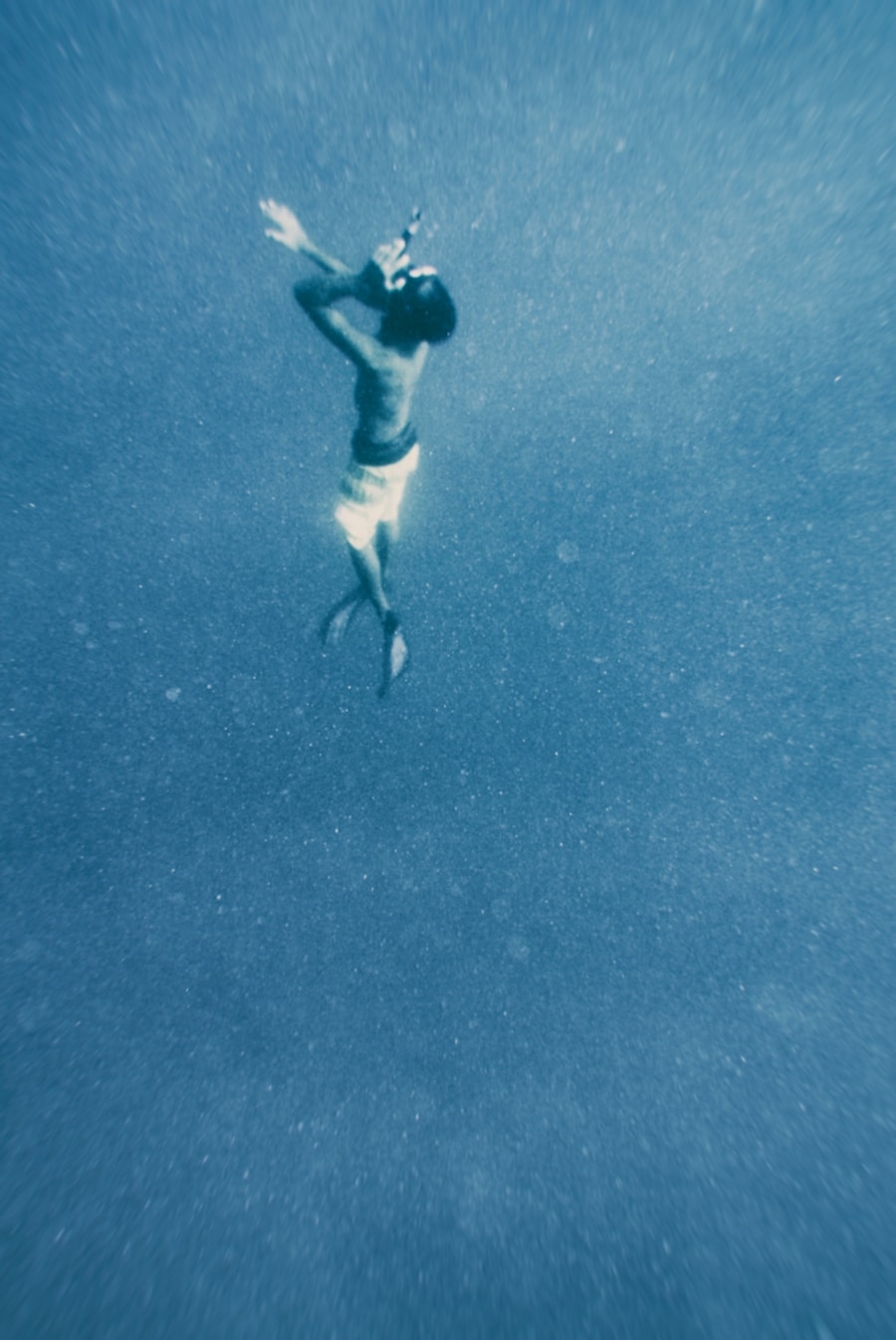Download links
How to install Exploring the Shallow Seas: A Beginner's Guide to Diving APK?
1. Tap the downloaded Exploring the Shallow Seas: A Beginner's Guide to Diving APK file.
2. Touch install.
3. Follow the steps on the screen.
Description
Diving is an exhilarating activity that allows individuals to explore the underwater world, offering a unique perspective on marine ecosystems. At its core, diving involves descending beneath the surface of the water, whether in oceans, lakes, or rivers, to observe aquatic life and geological formations. The two primary types of diving are scuba diving and free diving.
Scuba diving utilizes a self-contained underwater breathing apparatus, allowing divers to stay submerged for extended periods. In contrast, free diving relies solely on breath-holding techniques, requiring divers to rely on their physical conditioning and mental focus. The science behind diving is rooted in physics and physiology.
As a diver descends, the pressure increases, which can affect the body in various ways. For instance, the air in a diver’s lungs compresses, necessitating careful management of buoyancy and air supply. Understanding concepts such as equalization—where divers balance the pressure in their ears with the surrounding water pressure—is crucial for a safe and enjoyable experience.
Additionally, divers must be aware of the risks associated with decompression sickness, commonly known as “the bends,” which occurs when nitrogen bubbles form in the bloodstream due to rapid ascents.
Key Takeaways
- Diving involves exploring underwater environments using specialized equipment and techniques.
- Essential gear for shallow sea diving includes a mask, snorkel, fins, wetsuit, and weight belt.
- Safety tips for beginner divers include proper training, checking equipment, and diving with a buddy.
- Exploring marine life in shallow seas can be a rewarding experience, with opportunities to see colorful fish, coral reefs, and other fascinating creatures.
- When choosing dive sites, consider factors such as water conditions, marine life, and the level of experience required.
- Responsible diving practices include respecting marine life, avoiding touching or disturbing underwater habitats, and properly disposing of any waste.
Essential Gear for Shallow Sea Diving
When preparing for shallow sea diving, having the right gear is essential for both safety and enjoyment. The most fundamental piece of equipment is the wetsuit or drysuit, which provides thermal protection against cold water temperatures. Wetsuits are made from neoprene and come in various thicknesses, allowing divers to choose based on the specific conditions they will encounter.
For warmer waters, a thinner wetsuit may suffice, while colder environments may require a thicker suit or even a drysuit that keeps the diver completely dry. In addition to thermal protection, divers need a reliable mask and snorkel. A well-fitting mask allows for clear vision underwater while preventing water from entering the eyes.
The snorkel enables divers to breathe at the surface without lifting their heads out of the water, making it easier to observe marine life without disturbing their environment. Fins are another critical component of diving gear; they enhance propulsion and maneuverability in the water. The choice of fins can vary based on personal preference and diving style, with options ranging from full-foot fins to open-heel designs that accommodate booties.
A buoyancy control device (BCD) is also vital for managing buoyancy during dives. The BCD allows divers to adjust their buoyancy by adding or releasing air, enabling them to maintain a neutral position in the water column. This is particularly important in shallow dives where divers may want to hover above coral reefs or sandy bottoms without disturbing the ecosystem.
Additionally, a dive computer or depth gauge is essential for monitoring depth and time underwater, helping divers avoid exceeding safe limits.
Safety Tips for Beginner Divers

Safety is paramount for beginner divers, as the underwater environment can present various challenges. One of the first rules of diving is to never dive alone; always dive with a buddy. This practice not only enhances safety but also enriches the experience through shared exploration and mutual support.
Buddies can assist each other in emergencies, such as equipment malfunctions or unexpected currents. Before entering the water, it’s crucial for dive partners to discuss their plans, including maximum depth, dive time, and any specific signals they will use underwater. Another essential safety tip is to conduct thorough pre-dive checks.
This includes inspecting all equipment to ensure it is functioning correctly and that there are no leaks or malfunctions. Divers should familiarize themselves with their gear before entering the water, ensuring they know how to operate their BCD, regulator, and any other equipment they will be using. Additionally, understanding how to equalize pressure in the ears is vital; divers should ascend slowly if they experience discomfort during descent.
Divers should also be aware of their physical limits and avoid pushing themselves beyond their comfort zones. It’s important to stay within one’s training level and experience when choosing dive sites and depths. Beginners should start with shallow dives in calm waters before progressing to more challenging environments.
Monitoring air supply is another critical aspect of safety; divers should regularly check their air gauges and ascend with sufficient reserve air to ensure a safe return to the surface.
Exploring Marine Life in Shallow Seas
| Species | Number of Species | Depth Range (meters) |
|---|---|---|
| Corals | Over 8000 | 0-150 |
| Seagrasses | Over 60 | 0-40 |
| Sea Urchins | Over 950 | 0-500 |
| Octopuses | Over 300 | 0-100 |
Shallow seas are teeming with diverse marine life, making them an ideal environment for exploration. Coral reefs are among the most vibrant ecosystems found in these waters, providing habitat for countless species of fish, invertebrates, and other marine organisms. The intricate structures of coral reefs not only support biodiversity but also offer stunning visual displays that captivate divers.
Common inhabitants include clownfish darting among anemones, parrotfish grazing on coral, and schools of colorful wrasse gliding through the water. In addition to coral reefs, shallow seas often feature seagrass beds and rocky substrates that host a variety of marine life. Seagrass meadows serve as nurseries for juvenile fish and provide food for herbivorous species like manatees and sea turtles.
Divers exploring these areas may encounter fascinating creatures such as seahorses camouflaged among seagrass blades or octopuses hiding in crevices among rocks. The diversity of life in shallow seas offers endless opportunities for observation and learning about marine ecosystems. Understanding marine life behavior enhances the diving experience significantly.
For instance, many fish species exhibit territorial behaviors or engage in mating rituals that can be observed during dives. Divers can also witness symbiotic relationships between species, such as cleaner fish removing parasites from larger fish. By taking the time to observe these interactions, divers gain a deeper appreciation for the complexity of marine ecosystems and their interconnectedness.
Choosing the Right Dive Sites
Selecting appropriate dive sites is crucial for ensuring a safe and enjoyable experience for divers of all skill levels. Factors such as water conditions, visibility, depth, and marine life diversity should be considered when choosing a location. For beginners, sites with calm waters and minimal currents are ideal; these conditions allow new divers to build confidence while honing their skills without facing overwhelming challenges.
Popular dive sites often include protected areas such as marine parks or reserves where conservation efforts have led to healthy ecosystems. These locations typically boast vibrant coral reefs and abundant marine life due to reduced human impact. Researching local dive shops or online resources can provide valuable insights into recommended sites based on current conditions and seasonal variations in marine life activity.
Additionally, understanding local regulations and guidelines is essential when selecting dive sites. Some areas may have restrictions on diving activities to protect sensitive habitats or endangered species. Respecting these regulations not only ensures compliance but also contributes to the preservation of marine environments for future generations of divers.
Responsible Diving Practices

As stewards of the ocean, divers have a responsibility to engage in practices that protect marine ecosystems while enjoying their underwater adventures. One fundamental principle of responsible diving is minimizing environmental impact.
Instead, maintaining proper buoyancy control allows divers to hover above reefs without disturbing them. Another critical aspect of responsible diving is adhering to guidelines regarding wildlife interactions. While it may be tempting to approach or feed marine animals, doing so can disrupt their natural behaviors and lead to negative consequences for both wildlife and divers.
Observing marine life from a respectful distance allows for a more authentic experience while ensuring that animals remain undisturbed in their habitats. Education plays a vital role in promoting responsible diving practices. Divers should seek out training programs that emphasize environmental awareness and conservation efforts within the diving community.
Many organizations offer courses focused on marine ecology and conservation techniques that equip divers with knowledge about protecting fragile ecosystems. In conclusion, diving offers an unparalleled opportunity to explore the wonders of the underwater world while fostering a sense of connection with nature. By understanding the basics of diving, equipping oneself with essential gear, prioritizing safety, exploring diverse marine life, choosing suitable dive sites, and practicing responsible diving habits, individuals can enjoy this thrilling activity while contributing positively to ocean conservation efforts.
If you are interested in exploring the underwater world, you may also enjoy reading about the thrilling mobile game Garena Free Fire 2. This action-packed game will keep you on the edge of your seat as you battle it out with other players in a virtual world. Check out the article here to learn more about this exciting game.
FAQs
What is shallow sea diving?
Shallow sea diving refers to the activity of diving in relatively shallow waters, typically up to 40 feet deep. It is a popular form of diving for beginners and experienced divers alike, as it allows for easy access to marine life and underwater landscapes.
What are the benefits of shallow sea diving?
Shallow sea diving offers the opportunity to explore vibrant marine ecosystems, encounter a variety of marine life, and observe colorful coral reefs. It is also a great way for beginners to gain experience and confidence in diving before venturing into deeper waters.
What equipment is needed for shallow sea diving?
Basic equipment for shallow sea diving includes a mask, snorkel, fins, wetsuit or rash guard, and a buoyancy control device (BCD). Depending on the location and conditions, divers may also use a dive computer, underwater camera, and a weight belt.
What are some popular shallow sea diving destinations?
Popular shallow sea diving destinations include the Caribbean, the Red Sea, the Great Barrier Reef, and the Maldives. These locations offer clear, warm waters and an abundance of marine life, making them ideal for shallow sea diving.
What safety precautions should be taken when shallow sea diving?
Before shallow sea diving, it is important to check the weather and water conditions, ensure that all equipment is in good working order, and dive with a buddy. Divers should also be aware of their surroundings, avoid touching or disturbing marine life, and ascend slowly to prevent decompression sickness.





